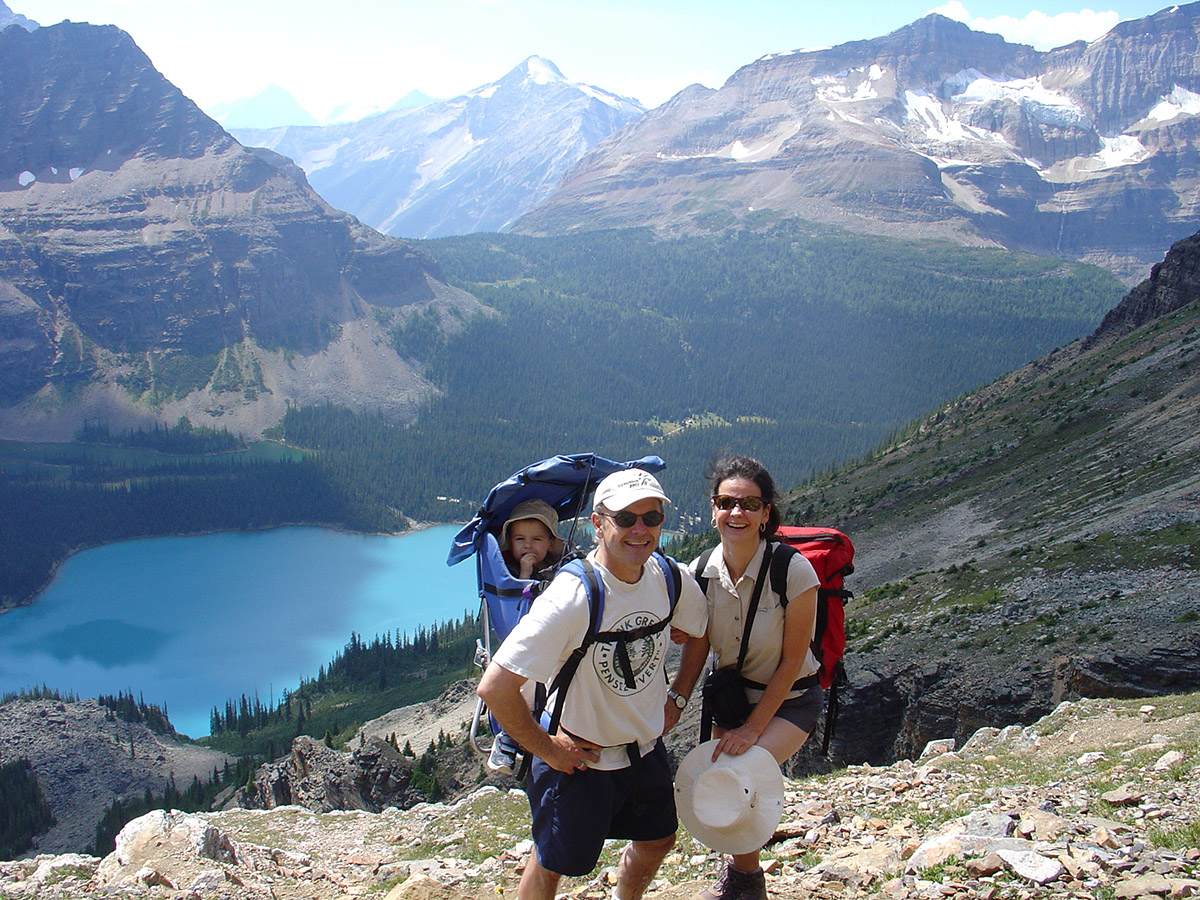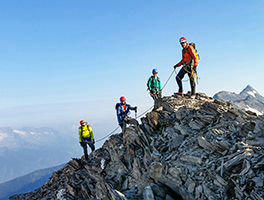


Looking over Lake O'Hara in Yoho National Park. Photo credit: Karen Sherlock
From the otherworldly rainforests of remote Gwaii Haanas National Park Reserve in British Columbia to the sweeping ocean views from the top of Gros Morne Mountain in Newfoundland, Canada's 47 national parks exist to encourage Canadians to understand, appreciate and enjoy natural areas.
But protecting our wild spaces while also encouraging hordes of visitors to explore them can create tension - especially now, with Parks Canada offering free admission to all national parks for 2017 to celebrate Canada 150.
As University of Alberta professor Glen Hvenegaard, '87 BSc(Forest), '89 MSc, sees it, free park passes are a good thing, albeit one that should be approached with care. A former park warden, Hvenegaard's research interests include the conservation aspects of ecotourism and park interpretation.
He has advice for anyone planning to mark Canada 150 with a visit to a national park. Here's how you can responsibly and respectfully celebrate Canada's national parks this year.
1. Be intentional
"Make use of this wonderful system of parks we have, but do so intentionally," Hvenegaard says. That sentiment should extend across your visit, guiding where you decide to go, what you bring, how you get there, and what you do when you're there.
Hvenegaard expects this year's free parks pass to cause some already crowded places to be even busier this summer. Avoid traffic jams and crowded trailheads by being prepared. Try a mid-week trip between the peak and off-peak seasons, for example, or choose a less popular park to visit.
Once you're out on your adventure, follow the rules. Respect wildlife, the natural environment and staff working in the park, he says.
2. Turn off the Wi-Fi
Sure townsites in some parks like Banff and Jasper, Alta., have cute shops and trendy restaurants. But venture off the main drag to discover what the park is really about.
"The attraction for these places are the natural features, rather than the built features that seem to draw our attention," Hvenegaard says. "Go to these places to enjoy what they are there for."
So turn off your Wi-Fi, get out of your car and head down a trail. For Hvenegaard, a personal favourite is Parker Ridge, a short hike with stunning views that starts just south of Jasper National Park's Icefield Centre. For short hikes outside Alberta, Hvenegaard recommends exploring the Giant Cedars Boardwalk in Mount Revelstoke National Park or the Rainforest Trail in Pacific Rim National Park Reserve in British Columbia, Point Pelee National Park's Marsh Boardwalk in Ontario, or the Narrows Peninsula Trail in Saskatchewan's Prince Albert National Park.
3. Consider your impact
In the Rocky Mountains, the Athabasca Glacier is shrinking. Signs show where the toe of the ice mass once reached; you can clearly see the glacier's great retreat.
Not every national park has such a vivid illustration of climate change, Hvenegaard says. But no matter where you visit this summer, know that your actions - inside and outside the park - have an impact.
Be mindful of your effect on the environment. Hvenegaard suggests carpooling or using public transportation to get to the park, if you can. If you're looking for more, Parks Canada has a list of fun ways you can help the environment during your family vacation.
4. Ask tough questions
When it comes to the beginnings of our national parks, "there are some histories that we chose to forget," Hvenegaard says.
In some parks, for example, Indigenous people who once occupied the land were evicted or weren't allowed to use resources they had long depended on. Four of Canada's western national parks - Banff, Jasper, Mount Revelstoke and Yoho - had First World War internment operations where prisoners of war constructed roads and cleared land.
Rather than ignore these difficult topics, Hvenegaard recommends asking tough questions. Why was this park created? What are the problems facing parks today? What are the current challenges of Indigenous groups in and around these places where they traditionally lived?
"Ask some of those probing questions to learn more, and don't just accept the one paragraph that's on a sign along the roadside," he says.
5. Get involved
After your visit to a national park is over, don't just go on your merry way. "All these places have great benefits. We need to document those and share those great stories," Hvenegaard says.
He wants to see more people involved in supporting our parks, whether by participating as citizen scientists recording and reporting observations about, say, water quality, or by joining advocacy groups like the national Canadian Parks and Wilderness Society.
"I think the best thing is to take your family out, take your children, take your grandparents, take whoever and just go experience [the parks]," Hvenegaard says.
"They are places that we can only get fully involved in if we fully appreciate them."
Glen Hvenegaard has taught environmental studies and geography courses at UAlberta's Augustana Campus since 1994. His research focuses on the conservation aspects of ecotourism, biogeography, park interpretation and rural sustainability.
-

STAY IN THE LOOP
If you missed Glen Hvenegaard's alumni lecture in Calgary, you can hear him speak again on Augustana Campus this fall. And stay tuned for similar events by subscribing to Alumni Insider, a monthly roundup of special events across the country and beyond.
-

LEARN MORE
Interested in other natural wonders? Sign up for Mountains 101, a UAlberta massive open online course covering the physical, biological, and human dimensions of mountainous places around the world.
We at New Trail welcome your comments. Robust debate and criticism are encouraged, provided it is respectful. We reserve the right to reject comments, images or links that attack ethnicity, nationality, religion, gender or sexual orientation; that include offensive language, threats, spam; are fraudulent or defamatory; infringe on copyright or trademarks; and that just generally aren’t very nice. Discussion is monitored and violation of these guidelines will result in comments being disabled.